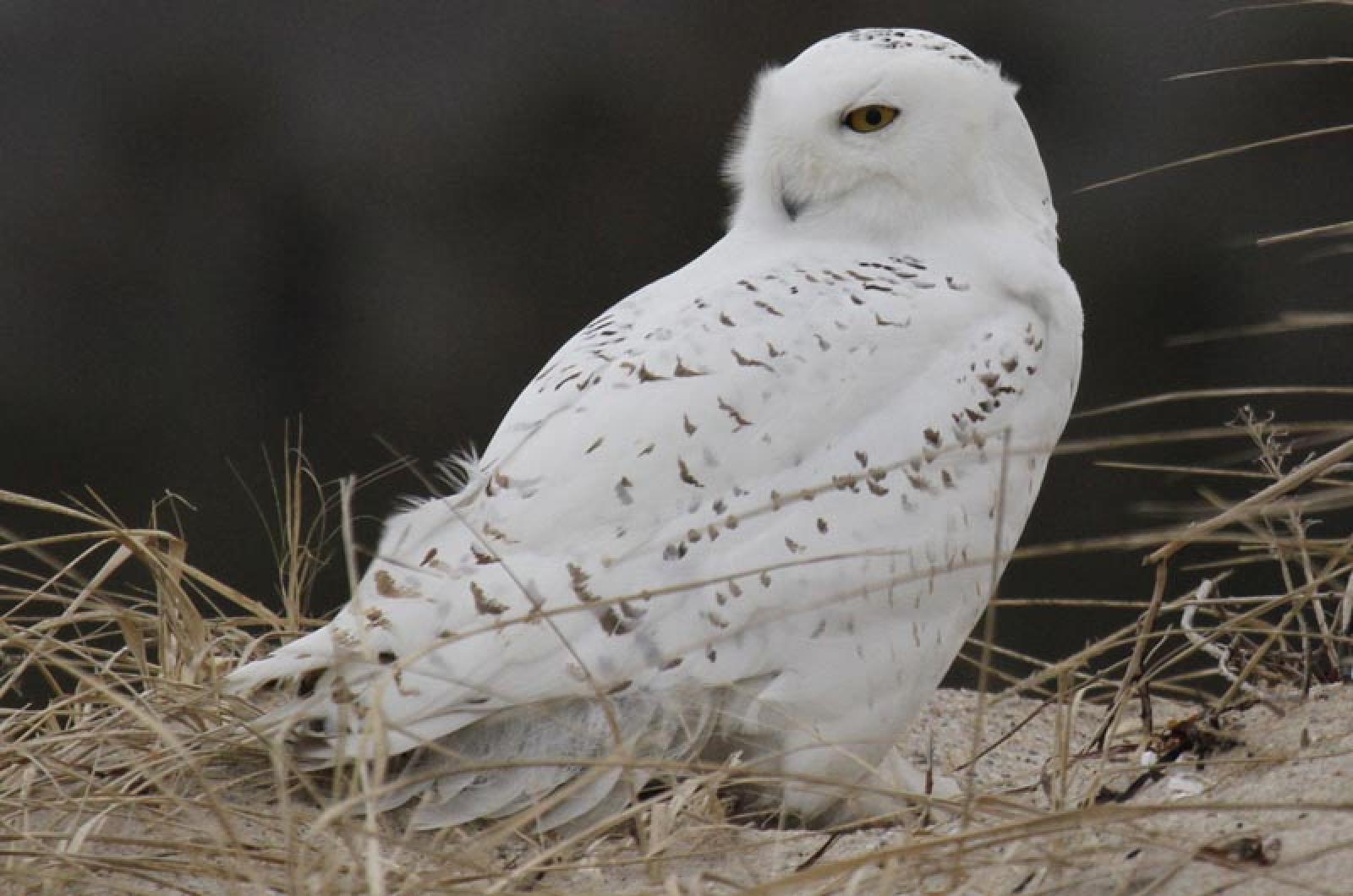Did this winter of ice and snow cause an unusually high number of waterbirds to die? Based on the number of reports of large numbers of carcasses on some beaches, the answer certainly seems to be yes. Ah, but appearances can be deceiving!
We may be able to get a definitive answer from data generated by SEANET, which is a program that has volunteers monitoring carcasses on beaches. This winter, some beaches have recorded seemingly above average numbers of carcasses, while others have reported few carcasses. That some mortality-laden beaches reported high numbers of carcasses only after the ice melted and the snow finally disappeared, suggests that these carcasses may represent an entire winter’s worth of mortality (I suggest due to predation by our great black-backed gulls) that only became exposed and discovered after winter’s grip finally loosened. Hopefully, SEANET will have more answers after all their data from this winter have been analyzed.
Bird Sightings
Susan Straight reports that an osprey has returned to the Quitsa Pond pole on March 24. Geoff Kontje spotted an osprey near the Lobsterville pole in March 27. Also that day, Martha Moore reports that the Long Point osprey returned. Debra Brown Hendrickson spotted an osprey at Duarte’s Pond on March 29. Charlie Finnerty spotted a pair at the eastern end of Squibnocket Pond, and Jane Norton observed a pair at Wade’s Cove on Chilmark Pond.
Snowy owls are in the news. On March 25, Boyd and Karen Osler found a snowy owl on East Beach near the Cedars. It appears to be an adult male as it is almost all white with little dark barring on its chest. Many have observed the snowy owl at State Beach, which seems to be hanging out on the Oak Bluffs side between the Big Bridge and the Jabberwocky/handicapped access area; it also has little barring on its chest. Christie Edwards reports that she has been seeing the Norton Point snowies almost daily since Jan. 3. Don Gosselin and Rick Dwyer both report three of them in the dunes on March 29. So it sounds like there are at least five snowies on the Vineyard; don’t wait too much longer to get out to see these magnificent raptors as they will be heading back to the arctic soon.
While looking for the snowy owl at State Beach, I looked at Sarson’s Island and was surprised not to find any sanderlings or dunlin there, as it was low tide and they have been present there throughout the winter. I did, however, find three double-crested cormorants. Their arrival, along with the return of the ospreys, suggests that the herring (fish) migration can not be far behind.
The Oslers also report a turkey vulture and an immature bald eagle on Cape Pogue. Photographs show the chest and belly of the eagle they saw is much darker than the second-year eagle photographed last week at Long Point by Martha Moore’s brother. It is exciting to have two eagles on the Vineyard!
Feeder reports still seem to dominate the sightings in the early spring, especially in weeks with rain and snow, which makes us seemingly less likely to venture outside to track down recent arrivals. Along these lines, Mike Ditchfield reports that he observed a red-breasted nuthatch at his feeder for the first time this year on March 24. And Nelson Smith noted that red nuts (yes, that is what we call them) appear at his feeder mid morning. Marianne Thomas and Mary Gould also have them at their feeders. They will be departing soon for their northern breeding grounds — we used to have a small breeding population in the State Forest, but I have not gotten any summertime reports for at least the past five or 10 years.
Danielle Shea had a flock of red-winged blackbirds show up at her Katama feeder on the evening of March 28. Ruth Nichols, Rosemary Knowlton Hildreth, Sue Hruby, Sharon Simonin, Morgan Hodgson, Maggie Bresnahan and Marsha Eldridge have also found red-wings in various locales around the Island. The consensus is that we do not yet have all of our breeding red-wings, even though it is really late for them; in normal seasons all the blackbirds would be back and singing by now.
On March 25, Tom Hodgson had two turkey vultures soaring over his West Tisbury house, they circled downward and then landed in a big spruce tree. Nearby, Sue Hruby noted 13 of them circling over Look’s Pond on the 22nd. There must be some dinner nearby, or perhaps a nocturnal roost, which will break up pretty soon as their breeding season nears.
Christie Coon reports red-breasted mergansers, buffleheads, surf scoters and black scoters off South Beach in Edgartown on March 27. The male black scoters were courting one female, stretching their necks outward to show off their bright orange beaks all the while making sounds (singing?) that attracted her dogs down to the edge of the water. Jeff Bernier observed a similar spectacle of four male red-breasted mergansers courting a lone female near Little Beach in Edgartown. Look for this sort-of-spectacular waterfowl courtship in the flocks of diving ducks and sea ducks, but do not wait too long as these birds are heading north toward their breeding grounds.
Yeah, I know they are not birds, but they are signs of the approaching spring, and we will take as many of these as we can find: Matt Pelikan reports hearing spring peepers calling from the wetlands at the land bank’s Farm Pond Preserve on March 27. And on that same day, I observed my first snowdrops blooming in a South William street yard in Vineyard Haven.
There are lots of birds around, so please get out looking for them, and be sure to report your bird sightings to birds@mvgazette.com.
Robert Culbert leads guided birding tours and is an ecological consultant living in Vineyard Haven.






Comments
Comment policy »